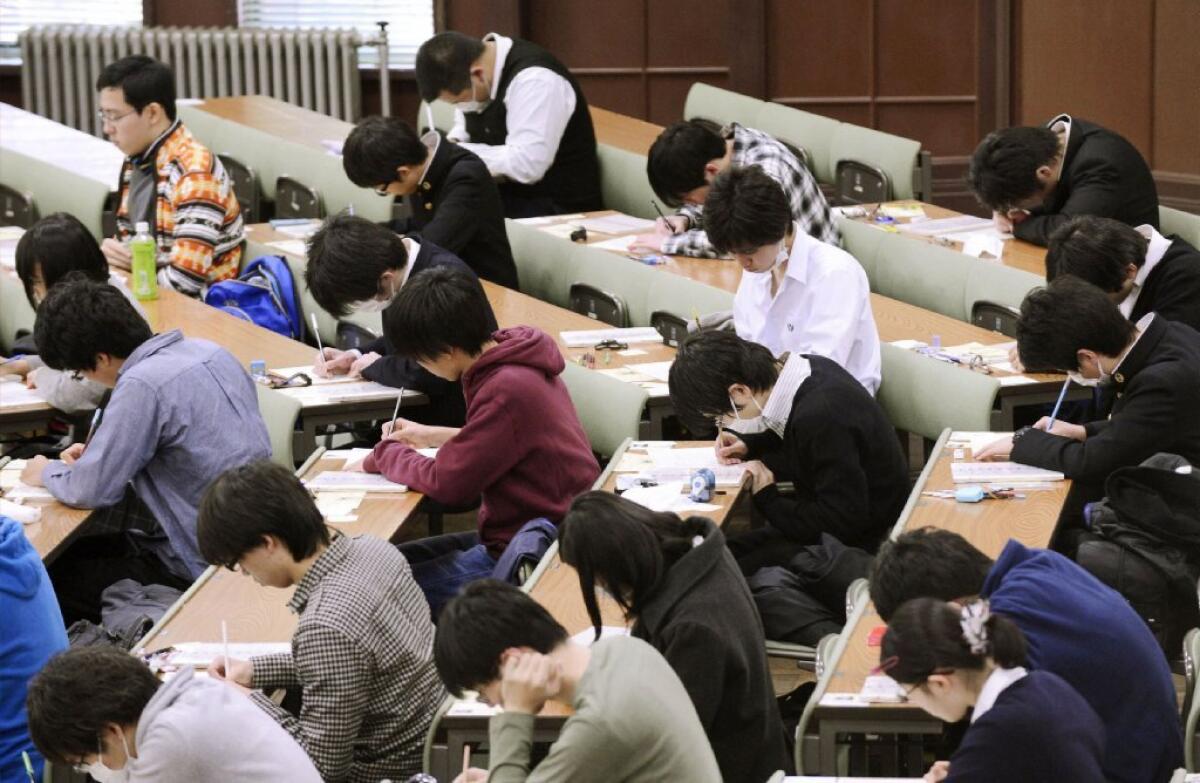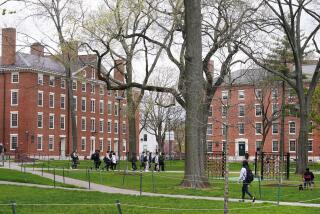Are America’s students falling behind the world?

- Share via
The standardized tests known as the Program for International Student Assessment are considered so important that when the latest results were released last week, the U.S. Department of Education participated in a so-called PISA Day.
The leaders of the nation’s teachers unions immediately fired off news releases asserting that the mediocre PISA scores of American students showed that more than a decade of testing-based reform had failed our schools. Prominent reform leaders, by contrast, concluded from the test results that the U.S. was failing to change schools radically enough to aid its most disadvantaged students. Still others predicted that the U.S. economy would crash and burn because of our students’ unimpressive math scores on the PISA exams compared with other countries’ students. (American students ranked above the median in reading and science but below it in math.)
A saner interpretation of the PISA results came from researchers who have studied international rankings in great detail, and their message goes something like this: Calm down, everyone. The results on this and other international tests are more complicated than they look, and in this case, nuance makes a difference. Despite the doomsday talk, the scores a country receives on the PISA don’t necessarily predict the strength — or weakness — of its future labor force or the trajectory of its economy, according to Martin Carnoy, a professor of education at Stanford University. Some countries with relatively low scores have built thriving, tech-based economies, while the economies of some high-scoring nations have faltered.
YEAR IN REVIEW: Washington’s 5 biggest ‘fails’ of 2013
And the results on the PISA, administered every three years to 15-year-olds in 65 countries, tell us as much about cultural differences as about differences between school systems. In the Asian countries that took the top spots — including Singapore, South Korea and areas of China — families spend heavily on private tutoring to prepare their children for college entrance examinations that closely resemble the PISA tests, Carnoy said. So the high PISA results don’t necessarily reflect on their schools.
The reasons that some countries do well (or poorly) are complicated. Finland, for instance, has historically been successful on the PISA tests — so much so that governments, including California’s, have sent delegations there to figure out the educational magic. And Finland has been successful despite the fact that, unlike in Asia, testing is de-emphasized and recesses during the school day are long. But Finland also is a country with relatively few disadvantaged children, largely because of the nation’s social welfare network. And disadvantaged children, no matter what the country, fare worse on the PISA tests than students from more educated and affluent families. A Stanford study last year found that non-school factors such as the number of books in students’ homes accounted for more than two-thirds of the variation in scores on high-profile international tests like PISA.
A study published this year by Carnoy and Richard Rothstein, a researcher at the Economic Policy Institute, found that much of the difference between U.S. scores and those of high-ranking nations is because the United States has a higher proportion of disadvantaged students. But the researchers found that the scores of the most disadvantaged U.S. students have been improving markedly over the years, while scores for their counterparts in many top-ranked nations have fallen precipitously.
In contrast, the highest-scoring U.S. math students are nowhere near their peers in top-ranking countries, Carnoy said.
Though curriculum itself isn’t a cure-all, the Common Core curriculum, which California and dozens of other states are beginning to implement, should help. It is more closely aligned to the kind of conceptual understanding and deep thinking that is both called for on the PISA tests and required for true innovation.
If there is a lesson to be gleaned from PISA, it’s that moving toward a more educated nation will require helping families give their children the resources and background they need to do better in school, as well as continuing reform efforts to improve instruction and curriculum. It requires committed action over time, not warring and self-serving pronouncements.
More to Read
A cure for the common opinion
Get thought-provoking perspectives with our weekly newsletter.
You may occasionally receive promotional content from the Los Angeles Times.






